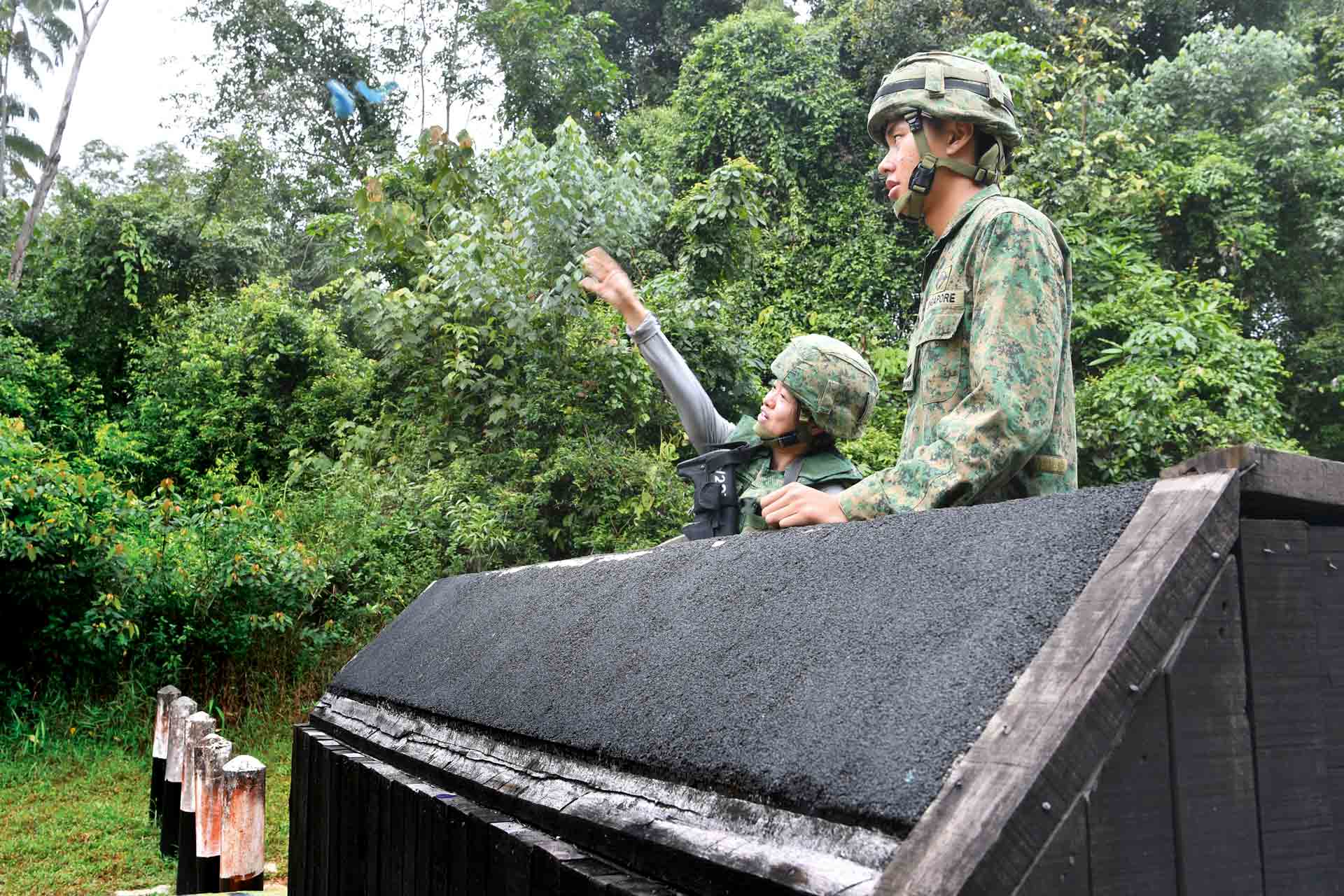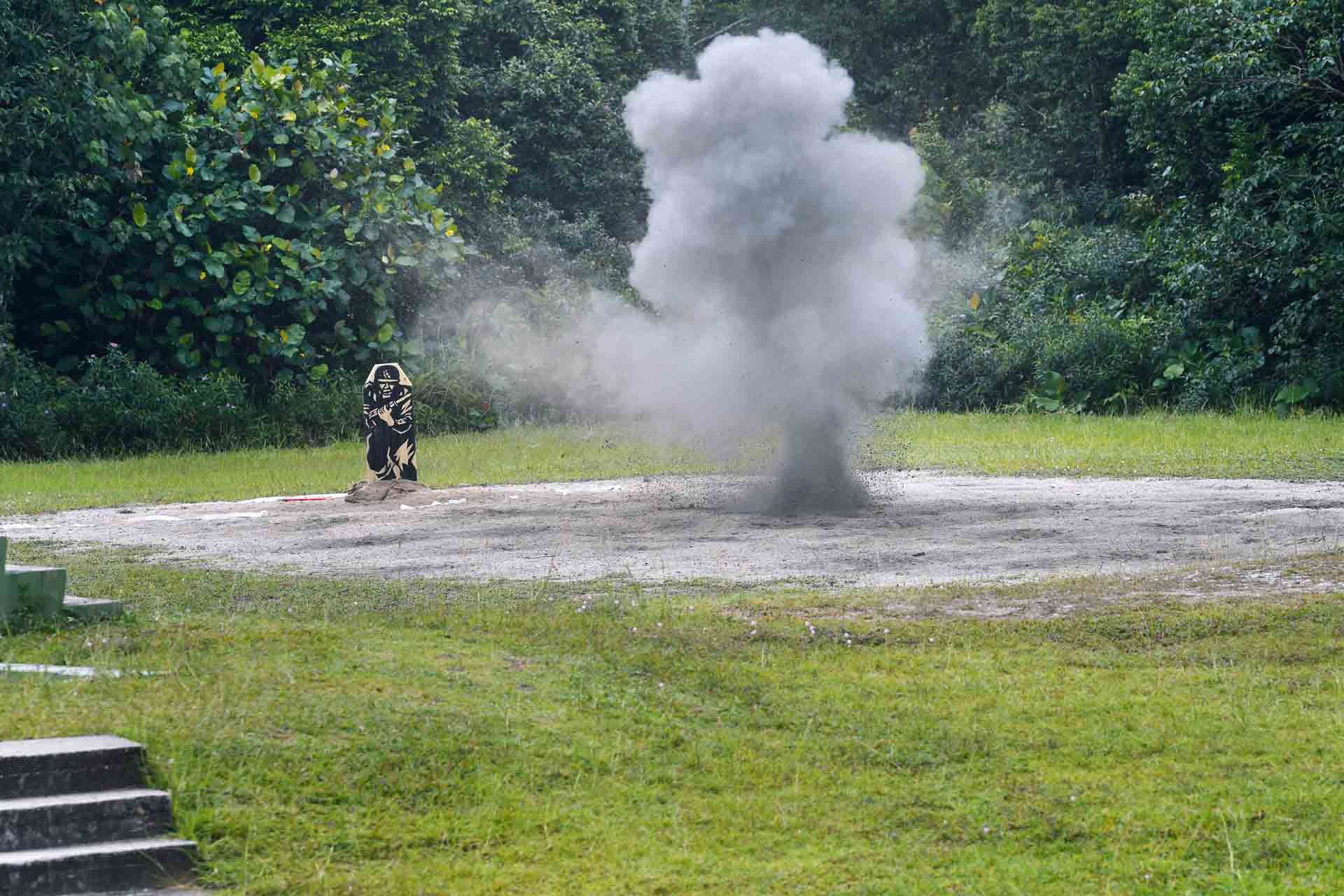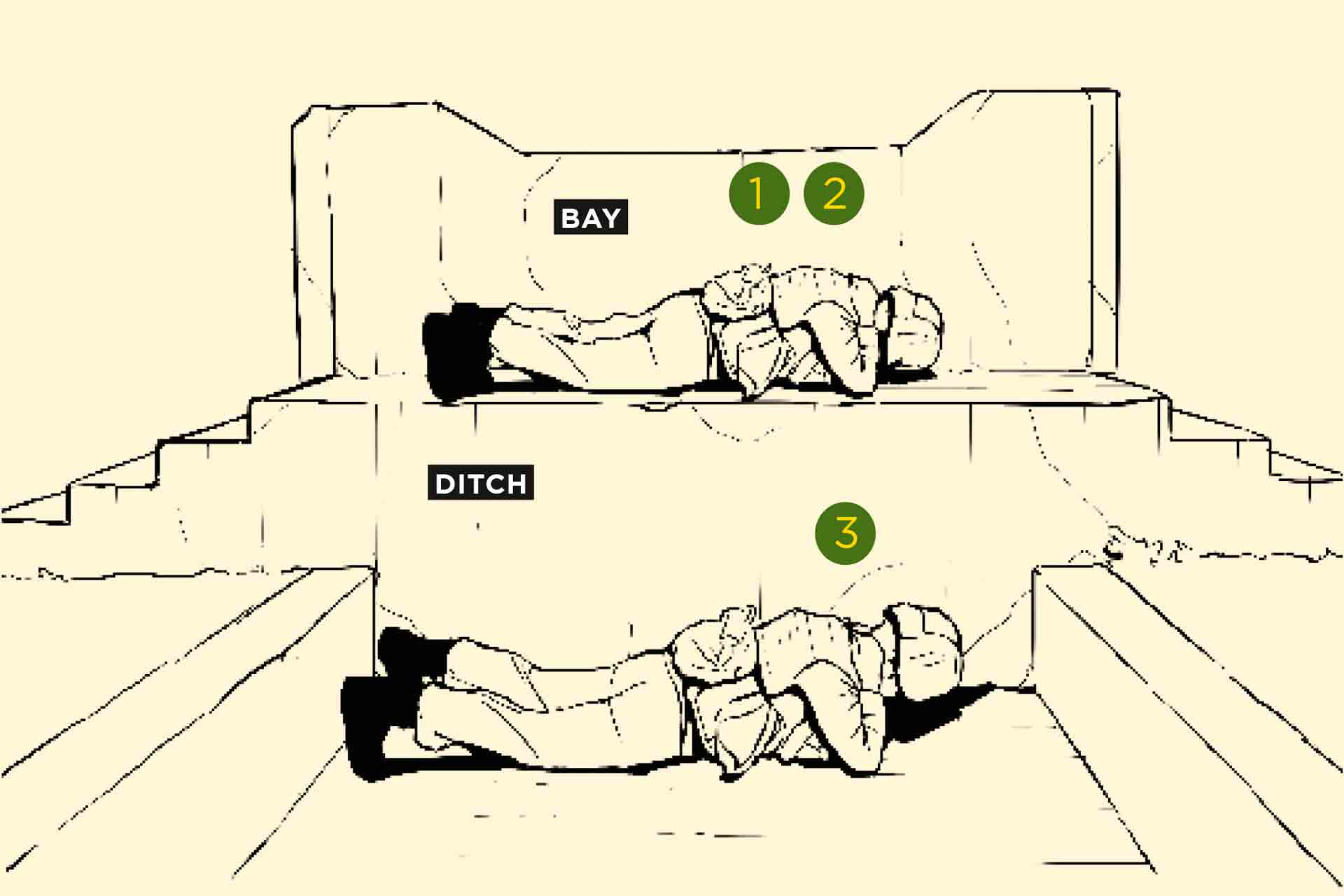OPS & TRAINING
I’LL THROW A GRENADE FOR YA!
01 Jan 2019
Journalist Thrina Tham discovers there’s more to grenade throwing than just tossing a small explosive.

My palms were sweaty, knees weak and arms heavy as I stood in the throwing bay clutching a grenade. This wasn’t exactly how I pictured myself days earlier when told I would be learning the basics of a grenade throw.
Grenade 101
“Never hold a grenade by its safety pin, even though it looks like a nice keychain to hook on to,” said Captain (CPT) Tan Kuan Liang in all seriousness.
As my instructor, he gave me a crash course on grenade inspection, storing and throwing methods.
I also went through grenade theory: there are 700 ball bearings in a grenade; its fuse delay is 3.5s to 5s; and it has an effective range of 200m. And did you know the word “grenade” is French for pomegranate, named after the fruit because of its shape?


Target practice
The dummy grenade I held was more oval than the bulbous shape of the early grenade — more like a kiwifruit. This blue rubber grenade is used for practice drills as part of the Distance Accuracy Course (DAC), in which recruits learn to throw from the standing, kneeling and prone positions, and the Grenade Assault Course (GAC) which simulates a battlefield.
Kitted up in my Load Bearing Vest and armed with a Singapore Assault Rifle 21 for the DAC, I prepared and threw my grenade. To my disappointment, it did not land far and was, in fact, nowhere near the target.
That, however, wasn’t even the main problem, as the Company Sergeant Major came over to point out.
I had forgotten to clasp the grenade with its lever facing into my palm to prevent it from springing out; and failed to hold the rifle against my chest to stabilise my swing when throwing. Finally, I had fudged my declaration, uttering “master right hand” instead of “right master hand”.
Sheepishly, I did a re-run before proceeding to the GAC.
Starting from a standing position, I flung the grenade towards the first target, then ran to retrieve it. But before I reached the next station, CPT Tan told me to drop and leopard crawl the remaining 5m (recruits have to sprint for 4s and leopard crawl for about 10m).
After trudging up to the kneeling station, I was exhausted. But I reached into my grenade pouch and pressed on.
Finally, at the last station, I took cover in a prone position behind an ammo box. Then lifting myself up with the last of my energy, I hurled the grenade at the target and sprinted there to complete my course.
By the end, I definitely got the routines down pat.

Boom: the real deal
The next day, the recruits put their training into practice at the live-throwing range. Though I could only throw the Singapore Practice Grenade (SPG), I was not about to miss the action.
The first section cleared their SPG throws with ease. But their faces were a mix of anticipation and trepidation as they drew their Singapore Fragmentation Grenades and headed to the bays.
I joined their section mates who were huddled at the viewing gallery with ear plugs on. Even about 300m away and behind a safety wall, I was shaken by the deafening boom of the explosion.
Getting a grip
Soon, it was my turn. Quickly, I mentally rehearsed the procedures, hoping not to slip up in front of the young recruits.
I felt their eyes on me as I stood at the front of the bay to make my declaration.
“Tham Wai Ying, Thrina. SXXXXXXXX. Right master hand. Non-sweaty palms. Permission to enter bay, Sergeant!”
“You may enter.”
After taking up my position, I looped my index finger into the ring and twisted it clockwise. “Safety ring, twist!”
Recalling warnings of the SPG’s pin being tougher to pull than that of the dummy grenade, I yanked it out with force. “Safety ring, pull!”
And finally: “Safety rii– erm, pin, out!... Grenade prepared and ready to be thrown.”
I received a pat on my arm — the signal to proceed. Channelling the energy of a shot put champion, I threw the grenade as far as I could and started my count. “1,000, 2,000, 3,000, 4,000...”
Finally, I heard the loud crack that simulated the explosion of the grenade and recovered my position.
Now that I had completed my SPG throw, would my safety officer be confident to step into the live- throwing bay with me? His reply was a clear: “Sure, why not?”
I am ready to join your team, Rambo.
Safety Drills
Three emergency drills that prepare recruits for what may go wrong during grenade throwing.

1 DROPPED GRENADE
The grenade drops and lands just a few feet outside the bay. The recruit lies flat on the ground, flushed against the wall of the bay. He keeps count while listening out for the explosion. In the actual scenarios, the safety officer will lie on top of the recruit to shield him.
2 GRENADE OUTSIDE BAY
The recruit accidentally tosses the grenade backwards while trying to throw it. He lies flat in the bay to shield his body.
3 GRENADE IN BAY
The recruit let slip the grenade, dropping it inside the bay. Keeping count, he rushes into the ditch and lies flat with his body flushed against the wall.
ALSO READ IN OPS & TRAINING

Exercise Wallaby 2025: To see better, shoot faster
31 Oct 2025
The SAF focuses on complex strike missions and multi-domain integration in Exercise Wallaby 2025, the 35th edition of its largest unilateral overseas exercise.

Ex Wallaby 25 – Greater Integration and Complexity
25 Oct 2025
The 35th edition of the SAF’s largest unilateral overseas exercise is an opportunity for expanded scale and deeper integration towards an effective, networked fighting force.

Ex Forging Sabre ramps up use of unmanned assets in integrated strike operations
12 Sep 2025
In this 10th edition of Exercise Forging Sabre, the SAF sharpened its cutting edge for the dynamic modern battlefield, with expanded integration between manned and unmanned platforms.


